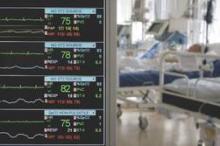Requiring patients to meet at least two criteria for systemic inflammatory response syndrome (SIRS) excluded one in every eight patients with infection and organ failure, and did not help predict mortality, according to a large multicenter retrospective study.
Patients with SIRS-negative severe sepsis had “substantial mortality and … epidemiologic characteristics and changes that were essentially identical to those of patients with SIRS-positive severe sepsis,” wrote Dr. Kirsi-Maija Kaukonen at Monash University in Melbourne, and her associates. “Our findings challenge the sensitivity, face validity, and construct validity of the rule regarding two or more SIRS criteria in diagnosing or defining severe sepsis in patients in the ICU,” the researchers wrote in a report in the New England Journal of Medicine, published simultaneously with their presentation at the annual meeting of the International Society on Intensive Care and Emergency Medicine.
Since 1992, the American College of Chest Physicians and Society of Critical Care Medicine have defined severe sepsis as suspected or proven infection, organ failure, and signs that meet at least two SIRS criteria. But affected elderly patients and those who take medications that affect heart rate, respiratory rate, or body temperature might not meet the definition, the researchers said (N. Eng. J. Med. 2015 [doi:10.1056/NEJMoa1415236]).
To test the validity of the definition, they retrospectively studied 109,663 patients with infection and organ failure treated over 14 years at 172 intensive care units in Australia and New Zealand. About 88% of patients had SIRS-positive severe sepsis, while 12% had SIRS-negative severe sepsis.
The two groups had similar characteristic and declines in mortality (for SIRS-positive patients, a drop from 36% to 18.3%; for SIRS-negative patients, a decrease from 27% to 9%; P = .12 for between-group difference), reported the investigators. The odds of mortality rose linearly by about 13% for each additional SIRS criterion (odds ratio, 1.13; 95% confidence interval, 1.11-1.15; P < .001), but there was no additional increase in mortality risk at the two-criteria threshold. Rates of discharge to rehabilitation and long-term care facilities also were similar between the two groups.
Applying the two-SIRS criterion within 24 hours of ICU admission – the most common time window for recruitment into sepsis trials – would exclude about one in every eight patients with infection and organ failure, the investigators concluded. “These patients have substantial mortality and their epidemiologic data are identical to those of patients with classic SIRS-positive severe sepsis, which suggests that these two groups represent different clinical phenotypes of the same process,” they wrote.
The Australian and New Zealand Intensive Care Research Centre funded the study. Dr. Kaukonen reported receiving grant support from the Academy of Finland. The other authors declared no relevant conflicts of interest.


